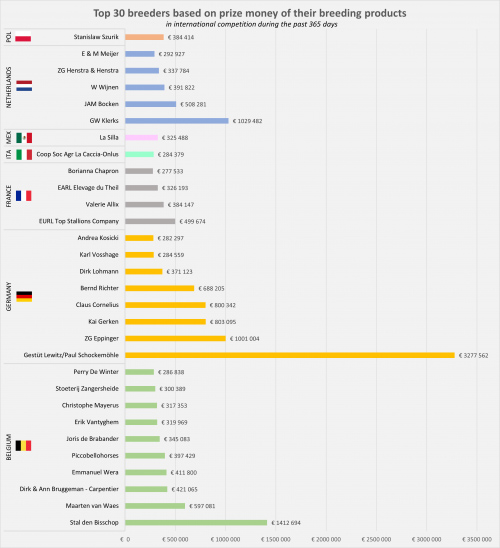by Christopher Hector
It’s like the search for the Holy Grail, the quest for a perfect, scientifically based method of evaluating stallions, but every attempt seems to throw up results that common sense rejects. In the thirty years I’ve spent looking hard at Warmblood breeding, more and more, I come to the opinion, that success is about equal parts the shrewd eye of the master breeder, and sheer blind luck, and that the really shrewd eyes focus not on the stallion but the mare…
The hippomundo website has brought some new and innovative ways of analysing breeding to the table and most recently have unveiled two ground breaking rankings. They set out to rank the world’s most successful breeders, looking at both the number of progeny to compete internationally and the prizemoney won by them.

I guess it is not surprising that the breeder with the most representatives by a long long margin is Paul Schockemöhle. Oh yeah, do I hear you say, he breeds a thousand foals every year, of course he will have the most. But long time stable rider, Alois Pollman-Schweckhorst, told me it was not just weight of numbers.
“He has around 1000 mares but he knows every brood mare by name. If you say one name of a mare, he says, yes, the grandmother of this mare, I bought from Hartwig Steenken, or Alwin Schockemöhle in 1970…. She is related to this horse and this horse. That is a knowledge that no one else has, and then it comes, maybe by intuition. He has the best experience, and the best success.”
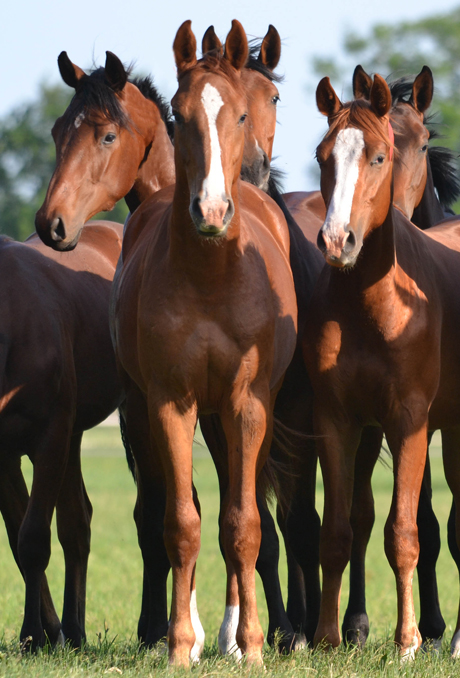
Youngsters at the Gestüt Lewitz
In the period that Hippomundo examined, the last 365 days, Schockemöhle’s Gestüt Lewitz produced a staggering 911 competitors – the next most successful, the Belgian stud, Stal den Bisshop, produced 78, and the third, the French stud, SCEA Riverland, 73.
I think sometimes people get too hung up on which ranking is the ‘real’ one, when in truth they are just different ways of looking, different lenses, drawing our attention to a new horse, a new breeder, like SCEA Riverland.
Story continues below the advertisement
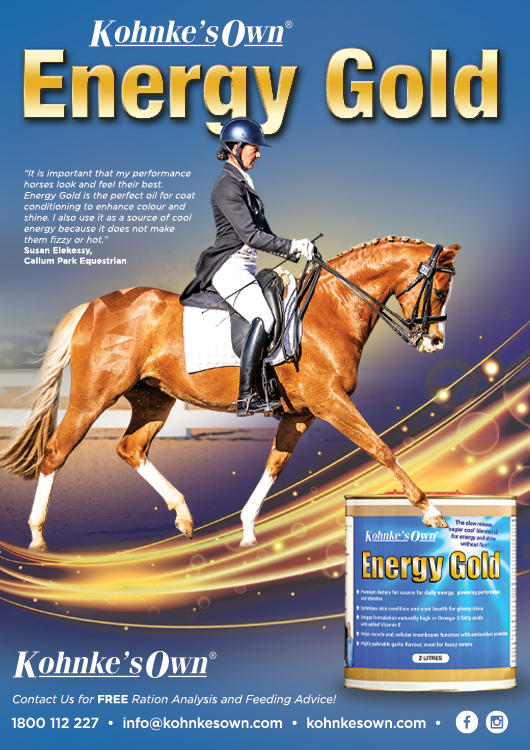
As usual, behind every good horse, there’s a great story, and so it is with the Elevage de Riverland. The stud was established in 1996 by Mickaël Varliaud when he was seventeen years old. Mickaël’s father who owned a food company liked to encourage his son, so he bought him the farm, but it was up to the youngster to do the rest, starting from scratch, transforming it into a stud, step by step, largely by himself. As a young professional rider, Mickaël did not have the money to buy ready made horses, so he started to breed his own.
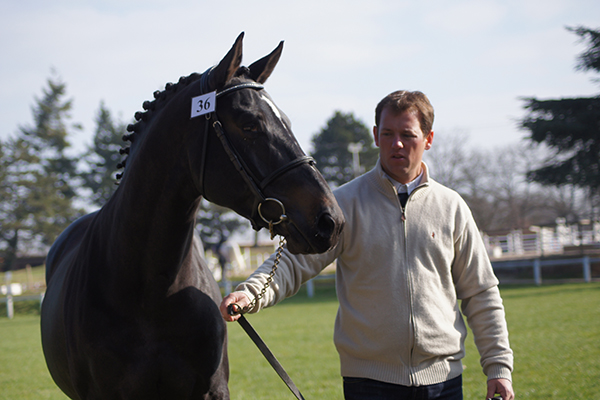
As a child he had ridden ponies on his uncle’s farm, and as he grew up, started a couple of horses each year on the national young horse circuit before he arrived at Riverland – and the farm is literally that, crisscrossed by little rivers. It is in the rich animal breeding area of Charente Limousine, and is home to cattle, sheep, and, of course, horses.
Currently Riverland produces between 60 and 80 foals per year. Right from the start Mickaël focused only on top mother lines, preferably mares with a lot of blood, and each year, only the best were selected and kept.
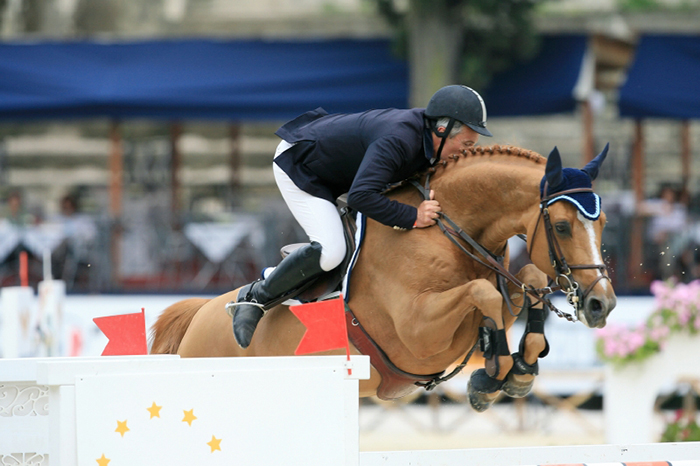
Jalis de Reiverland
One of the mare lines is that of Quidam de Revel. The stud has the half sister to Quidam, Tosca de Revel (Kissovo / Dirka) and the full sister, Razzia de Revel (Jalisco B / Dirka). Tosca produced Jalis de Reiverland (Bleu Blanc Rouge) who jumped 1.60 with Roger-Yves Bost. Mickaël then bought Jalis’s full sister, Isis Rouge who is the dam of Presence de Riverland (Kannan) who jumped 1.35 at the end of the six year old season. Presence is the dam of Hold Up Riverland (L’Arc de Triomphe), second in the French three year old championship and now sold to Germany.
The Quidam full-sister, Razzia has produced Stella de Riverland (Cornet Obolensky) a 1.60 competitor with Juliette Faligot and second in the CSI4* at St Lo, as well as the full-sister, Quatro de Riverland. Razzia is also the dam of Missrazzia de Kerser (Chapman Rouge) who is the mother of Delvis de Riverland (Elvis ter Putte) who placed in the 4, 5, and 6 year old French finals, and is now competing in seven year old classes with Timothée Anciaume.
Riverland also has four mares that descend from the grand dam of international star, Itot du Chateau, Javotte D, by the Ibrahim son, Cor de Chasse out of an Anglo Arab mare by Rantzau xx. That mare line has produced HH Bresil de Riverland, 1.50 with Quentin Judge, and Bentley de Riverland aks Oak Grove’s Laith (London) who jumps 1.55 with Abdel Said. There is also the mare line of Fragance du Chalus (Jalisco B / Fury de la Cense), this line has produced Dorado de Riverland (Untouchable M / Argentinus) winner of the French five year old championship, seventh in the six year old, and third in the seven year old champs.
Other lines represented at Riverland include those of Nidor Platiere (1979/SF: Gentleman Platiere), Narcos II (1979/SF: Fairplay), Kinette de Launay (1976: Quastor/SF), Almé (1966/SF: Ibrahim), Dollar dela Pierre/aka Tlaloc La Silla (1991/SF: Quidam de Revel), Orient Express (2002/SF: Quick Star), Urleven Pironniere (1986/SF: Hurlevent), Mozart des Hayettes (1996/sBs: Papillon Rouge (SF)), Apache d’Adriers (1988/SF: Double Espoir), L’Arc de Triomphe (1999/Oldbg: Landor S) and Taloubet Z (2000/KWPN: Galoubet A (SF)).
Story continues below the advertisement
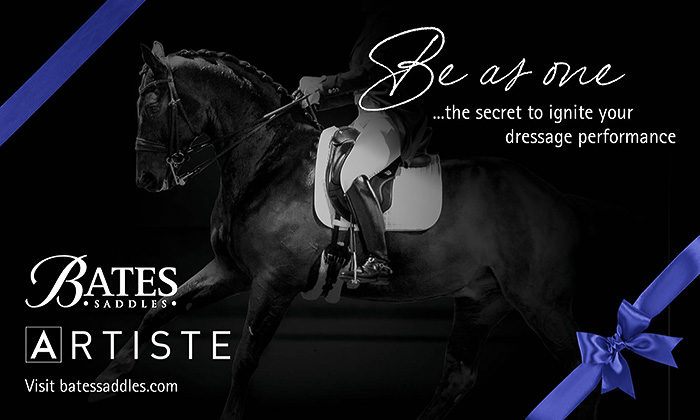
I asked Mickaël Varliaud who had been the most important stallions in his breeding program?
“In the past we have used the successful stallions Papillon Rouge, Diamant de Sémilly, Dollar du Murier, Quick Star and Quidam de Revel. Now we really like the eight year old, Candy de Nantuel (Luidam / Diamant De Sémilly) who seems to be a very promising stallion for the future. We are also really impressed with the skills transmitted by HH Bresil de Riverland (Canturano I / Quidam de Revel), the foals are very exciting. We also have the full brother of Arqana’s mother as a stallion, Quatro de Riverland (Diamant de Sémilly / Jalisco B). We are very happy with his offspring, they are all very good jumpers. And we use also Mylord Carthago (Carthago / Jalisco B) because he is very successful as a stallion.
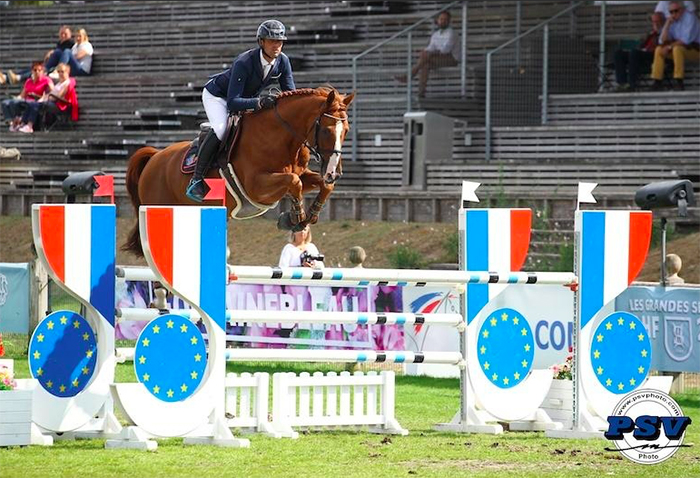
Candy de Nantuel
Which horse has been your most successful jumper in the last year?
“This year for sure, Arqana de Riverland (Cornet Obolensky / Diamant de Sémilly) has been the most successful one, but Dorado de Riverland (Untouchable M / Argentinus) also had an incredible season. Ryanair de Riverland (Quick Star / Papillon Rouge) and Teck de Riverland (Quick Star / Cincaba Rouge) are also in very good shape and we have many young horses of five, six, seven and eight years old who are really talented and coming to the best level.”
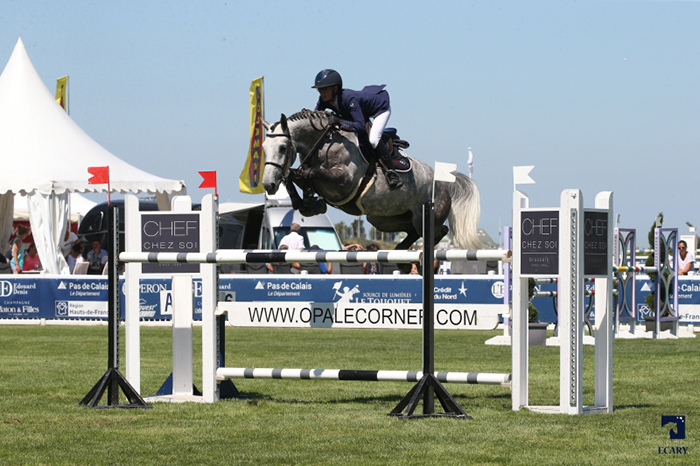
Arqana de Riverland
What are the most important things to keep in mind to breed successful jumpers?
“Good selection to of the broodmares to start, trying to do the best cross, well fed, good grass and good management of the fields and the cultures, and after we needs to find the right way for each horse.”
Western Europe still dominates the top breeders rankings, with 29 of the 30 from six different European nations. The remarkable success in recent years of Belgian breeding is underlined, with 12 of the thirty from that tiny country. Jumping breeding has a long history in France, and that country supplies eight of the top 30, followed by four from Germany, three from The Netherlands, two British and one Mexican.
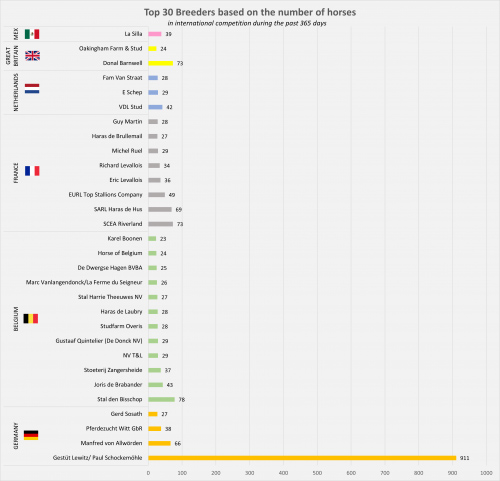
Story continues below the advertisement
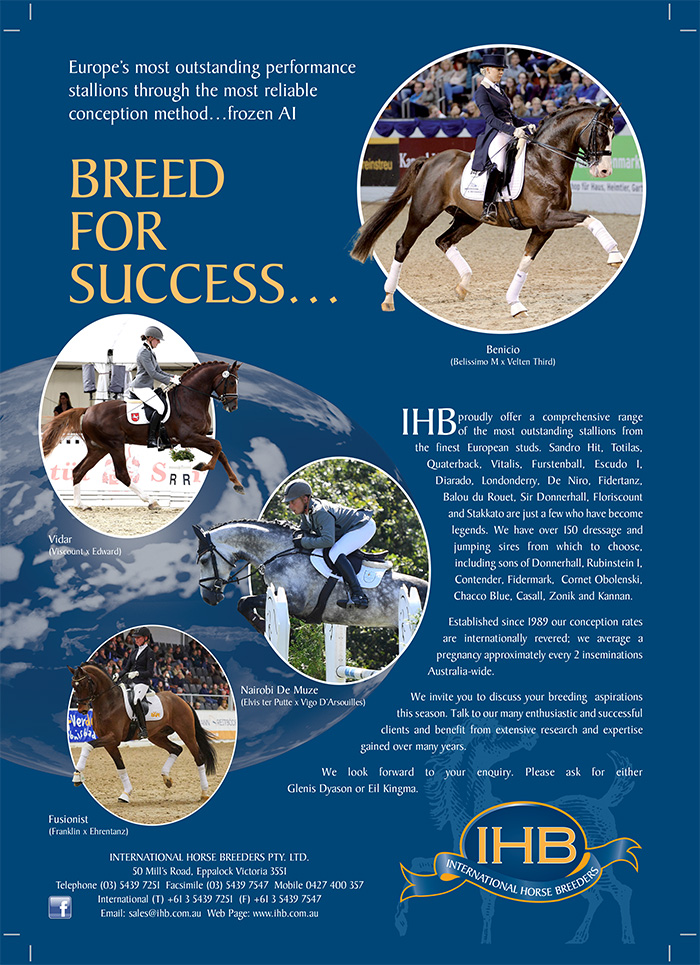
Hippomundo then refined its analysis, looking at the average winnings per horse. Once again, Paul Schockemöhle heads the ranking win a total winnings €3,277,562. The PS contingent was lead by the Cornet Obolensky son Balou du Reventon who won €341,822 during the past 365 days with his Irish rider, Darragh Kenny.
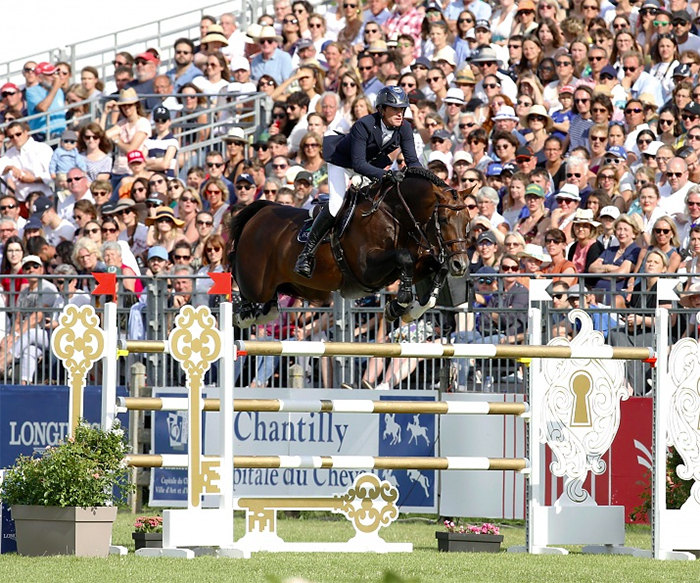
Balou de Reventon (Photo Stefano Grasso)
Again, it is worth noting that while Balou du Reventon is by the Belgian bred Cornet Obolensky, by Heartbreaker – a typically Dutch mix of Holsteiner, Selle Français and Thoroughbred, with just a touch of the native Gelderlander, on the bottom line Balou du Reventon is out of a mare who combines several of the foundation stallions of the Schockemöhle family’s breeding program. Georgia is by the Contender son, Continue (out of a mare by the half blood stallion, Tin Rocco), one of the Schockemöhle stalwarts, out of a mare line that goes back to another influential Schockemöhle sire, Gepard by Gotthard.
I asked Paul Schockemöhle what was the secret of his success…
I’ve been looking at the figures from the hippomundo rankings, and it is pretty amazing, your stud produced almost 1000 international jumpers that competed in the past twelve months, and the next highest total was less than 100 – what is the secret?
“Okay there are two reasons, first of all, I have more mares than the others, so I produce more horses. But I have also selected my mares over more than thirty years, very carefully, all the matches, which mares go to which stallions, I do myself. I know the stallions. I use not only my own stallions, but I use a lot of other stallions around the world, wherever I see a good stallion, I try to get semen from him.”
“Fifty percent of my foals are born by embryo transfer, that means the best mares get more foals and the mares that I judge not to be so good, are used as recipients. It is through that whole program that I think I am more successful than the others.”
Looking at your top horse over the last twelve months, Balou du Reventon – okay he is by Cornet Obolensky, but when I look at the mare line, I see stallions that have been foundation sires in your program going back thirty years. How important are those sires from early times in breeding today’s modern Warmblood?
“It is totally important that you have good mare lines, mares that have jumped themselves, but not only that, I use also young mares – I look at them free jumping, and then early in their career, and I use embryo transfer. But in general, all the good horses, in the end, come out of the same lines. Of the foals I have, 90% are out of mares whose lines I have had for twenty years. You have to have the lines, but you also have to test them, jump them. We ride a lot of horses. So we use the not so good mares as recipients, and the good mares get three, four, five foals a year.”
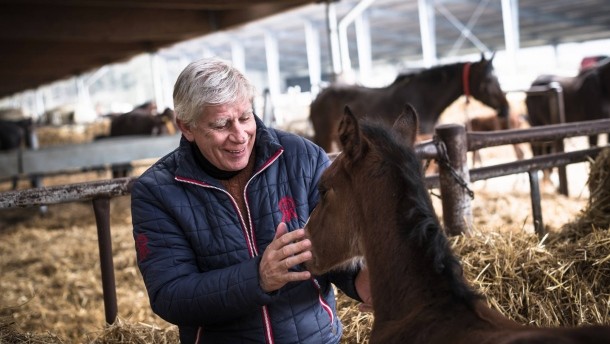
Is that the art of a good breeder, to know what the mare has, and what she needs from the stallion to complement her qualities? That knowing the mare is more important than knowing the stallion…
“I think both is important but without knowing the dam, you have very little chance. I do all the matches myself, I know the mares, the jumping, the temperament, the soundness, then I look for stallions that will match and improve, because there are no perfect horses in the world. Know the stallions very well, but also know the mares very well. For the past five years, I have had more success with my own stallions because I know them very well and how they are made. But still the thing is, every good horse has to be made, if they are very talented and they come to a bad rider, then it won’t work. As better the horse is, the better the rider should be.”
Story continues below the advertisement
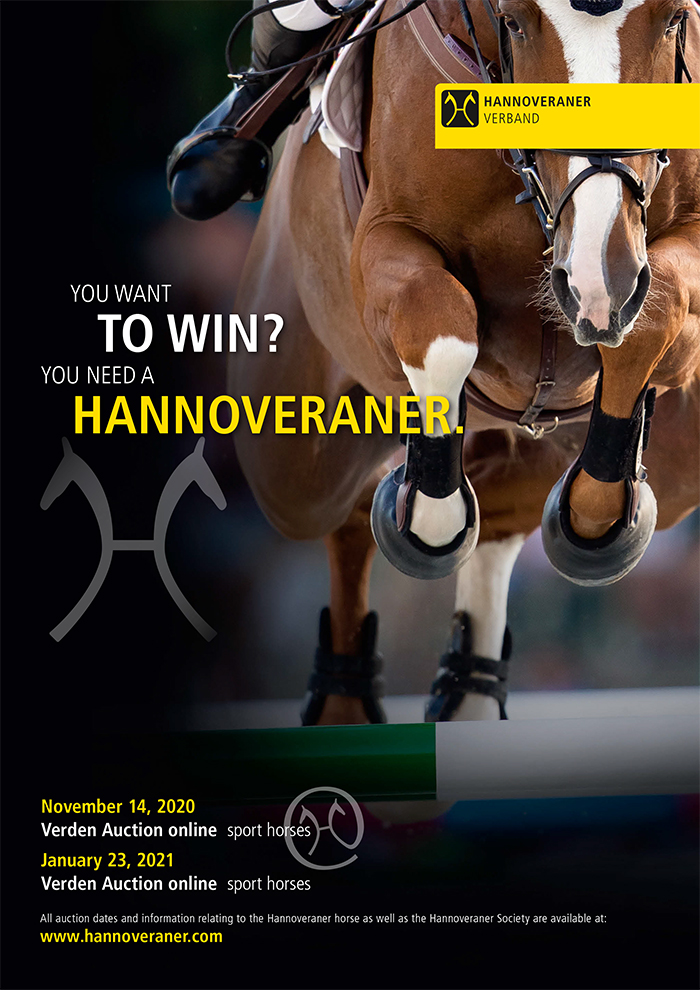
The Belgian operation Stal den Bisschop took second place with their products winning €1,412,694 this past year, with the Dutch breeder, G. W. Klerks third with a total of €1,029,482. At this point Hippomundo draws attention to the fact that the Schockemöhle representatives only averaged €3,597, while the Bisschop horses averaged €18,112. This opens a can of statistical worms…
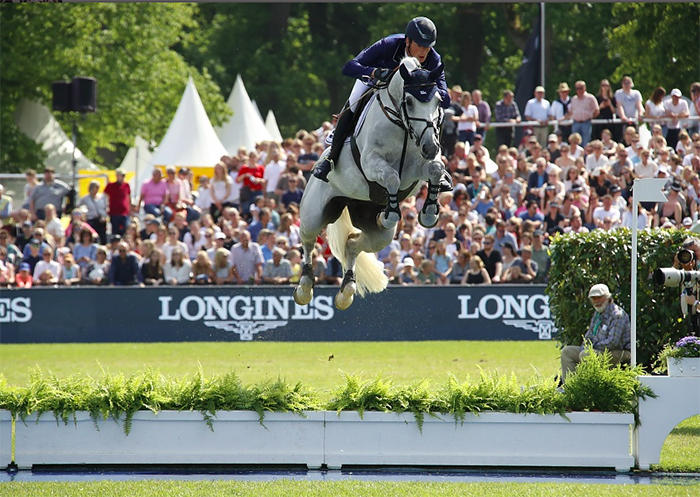
Jasmien vd Bisschop (Photo Stefano Grasso)
Okay the Bisschop average looks brilliant against the Schockemöhle average until you realise that it is largely thanks to the €1,131,581 won by Jasmien vd Bisschop (Larino / Chin Chin) that their average is so high. If we take out the highest earner for both studs, then the picture is rather different. The Schockemöhle average without Balou du Reventon is not much changed – €3226, but the Bisschop average without Jasmeine plummets about €14,000 to €3650. The Dutch breeder, G.W. Klerks’ result is almost entirely due to one horse, Christian K (Nameless R) who contributed €1,029,057 of the Klerks’ total €1,029,482.
In the early days of the World Sire Rankings, they were weighted very heavily to horses that produced one superstar champion, so we had a series of one horse wonders topping, particularly the dressage, rankings, so we should be careful of ‘averages’ that are heavily influenced by one brilliant individual – which is not to deny that Jasmeine vd Bisschop is a very very fine competitor indeed…
Jasmeine, who has been a superstar for Daniel Duesser, is by a Grand Prix jumping stallion, Larino who combines most of the names that have made Dutch breeding so successful. He is by the Voltaire son, Concorde, and Concorde is out of a mare by one of the early Trakehners to come to Holland, Marco Polo. Larino is out of Erina by the Ramiro son, Armstrong, out of a German mare who combines the influential Hanoverian, Sender, with the Anglo Arab, Ramzes and the Selle Français stallion that contributed so much to Dutch breeding, Le Mexico.
Jasmeine’s dam is BWP branded but her blood is straight from Holstein, by Chin Chin (Constant / Farnese) out of a Goodwill (Landgraf / Moltke) mare.
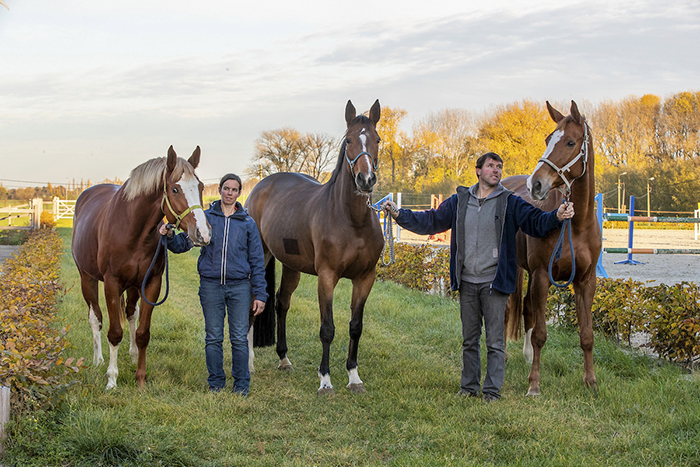
Ines and Tom De Craene (Photo Dirk Caremans)
Jasmeine is the product of one of Belgium’s most successful studs, Bisschop, the passionate project of Ines and Tom De Craene. The stud breeds about fifty foals from 25 donor mares a year, using embryo transfers so that the mares are able to continue with their own sports career. The mares are bred as two year olds and go under saddle when they are three.
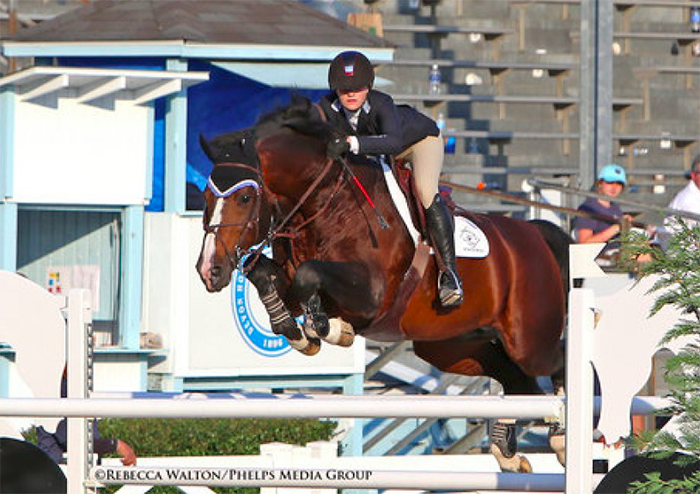
Dulf van den Bisschop
The horse that put Bisschop on the map was Dulf van den Bisschop (Heartbreaker x Libero H). He was champion at the BWP-stallion approval as a three year old. Then came a string of top liners – Harley vd Bisschop (Dulf van den Biscchop x Coronado) with Nicola Phillipaerts and now with Bertram Allen, Ida vd Bisschop (Kashmir van Schuttershof x Papillion Rouge) a 1.60 competitor with the Swedish rider Irma Karlson, Foica vd Bisschop (Vigo d’Arsouiles x Lys de Darmen) with the Swiss rider Jane Richard Philips, Jasmien vd Bisschop (Larino x Chin Chin) with Daniel Deusser, and Jade vd Bisschop (Ogano Sitte x Grannus) with Pieter Devos. It really is a most impressive list.
I asked Tom how he became involved: “The passion for horse breeding has already started in our youth. We owned a few mares. My parents were dairy farmers who also attached great importance to the genetics of their cows. I think that’s what gave me a passion for breeding and genetics. In 1999, when I was 25 years old, we bought our farm in Melle. This was a dairy farm that we also expanded further in combination with horse breeding. In 2007 our horse breeding had grown to such an extent that we then decided to stop the dairy sector completely and only continue with horse breeding. That was our greatest passion, by the way.”
“We have always strived to breed a modern sport horse. We did not stick to certain lines or stallions, but we always tried to combine the best everywhere.”
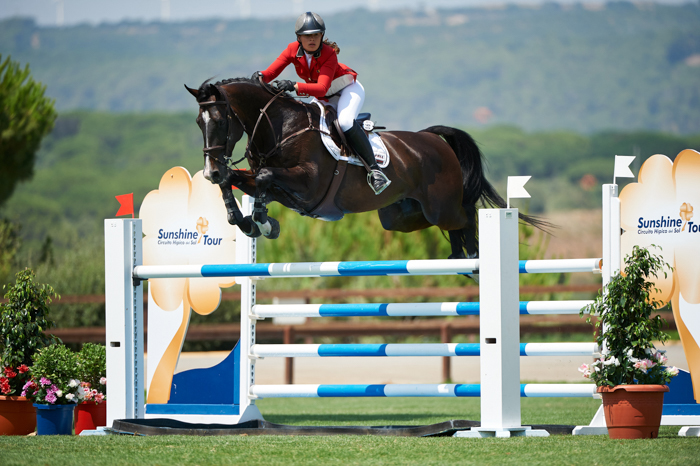
Comme d’Api vd Hacienda – a young stallion who is being given a chance as a sire…
(photo credit – 1clicphoto)
“We have always used proven sires in our breeding, as well as good young stallions, provided they come genetically from an interesting family. We also attach great importance to the mentality of the horses. Intelligent, willing horses are very important in modern sport. In recent years we have always had our own stallion at our stud farm. We then give them the opportunity to prove themselves in breeding. Currently this is Comme d’Api vd Hacienda (Cumano / Darco), a stallion who himself competed 1m60 with Daniel Deusser. His offspring is doing very well. The most famous is Scott Brash’s Hello Mr President.”
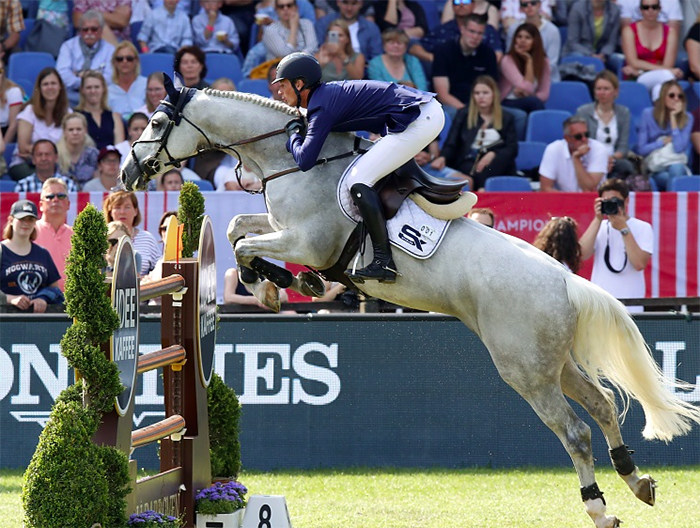
The current star, Jasmien (Photo Stefano Grasso)
And the current star, Jasmien?
“Jasmien vd Bisschop was Elchinni vd Flandria’s first foal. We bought Elchinni (Chin Chin / Goodwill) when she was four years old. She was injured and would never be able to compete in jumping. It was a very beautiful mare with a lot of blood. Jasmien was sold when she was one year old. As a young horse she was ridden by an amateur, but then she showed all her exceptional qualities. Afterwards we only got colts from Elchinni. We therefore have nothing left from this line in our breeding. Two years ago STX stables bought the mare Elchinni from us.”
As you can see, these new rankings have focused us on two relatively new studs, and reminded us, if we needed reminding, what a force in the shaping of the modern jumping horse Paul Schockemöhle has been…
